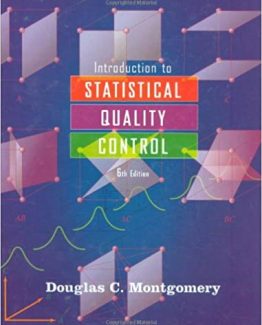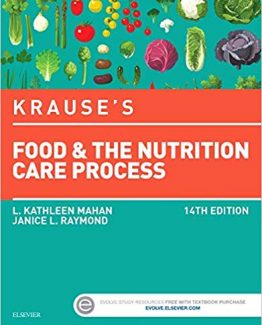Essential Cell Biology 5th INTERNATIONAL Edition by Bruce Alberts, ISBN-13: 978-0393680393
[PDF eBook eTextbook]
- Publisher: W. W. Norton & Company; Fifth INTERNATIONAL edition (July 1, 2019)
- Language: English
- 864 pages
- ISBN-10: 0393680398
- ISBN-13: 978-0393680393
This text features lively, clear writing and exceptional illustrations, making it the ideal textbook for a first course in both cell and molecular biology. Thoroughly revised and updated, the Fifth Edition maintains its focus on the latest cell biology research. For the first time ever, Essential Cell Biology will come with access to Smartwork5, Norton’s innovative online homework platform, creating a more complete learning experience.
Table of Contents:
CHAPTER 1 Cells: The Fundamental Units of Life 1
PANEL 1–1 Microscopy 12
TABLE 1–1 Historical Landmarks in Determining Cell Structure 24
PANEL 1–2 Cell Architecture 25
How We Know: Life’s Common Mechanisms 30
TABLE 1–2 Some Model Organisms and Their Genomes 35
CHAPTER 2 Chemical Components of Cells 39
TABLE 2–1 Length and Strength of Some Chemical Bonds 48
TABLE 2–2 The Chemical Composition of a Bacterial Cell 52
How We Know: The Discovery of Macromolecules 60
PANEL 2–1 Chemical Bonds and Groups 66
PANEL 2–2 The Chemical Properties of Water 68
PANEL 2–3 The Principal Types of Weak Noncovalent Bonds 70
PANEL 2–4 An Outline of Some of the Types of Sugars 72
PANEL 2–5 Fatty Acids and Other Lipids 74
PANEL 2–6 The 20 Amino Acids Found in Proteins 76
PANEL 2–7 A Survey of the Nucleotides 78
CHAPTER 3 Energy, Catalysis, and Biosynthesis 81
PANEL 3–1 Free Energy and Biological Reactions 94
TABLE 3–1 Relationship Between the Standard Free-Energy Change, G°, and the Equilibrium Constant 96
How We Know: “High-Energy” Phosphate Bonds Power Cell Processes 102
TABLE 3–2 Some Activated Carriers Widely Used in Metabolism 109
CHAPTER 4 Protein Structure and Function 117
PANEL 4–1 A Few Examples of Some General Protein Functions 118
PANEL 4–2 Making and Using Antibodies 140
TABLE 4–1 Some Common Functional Classes of Enzymes 142
How We Know: Measuring Enzyme Performance 144
TABLE 4–2 Historical Landmarks in Our Understanding of Proteins 160
PANEL 4–3 Cell Breakage and Initial Fractionation of Cell Extracts 164
PANEL 4–4 Protein Separation by Chromatography 166
PANEL 4–5 Protein Separation by Electrophoresis 167
PANEL 4–6 Protein Structure Determination 168
CHAPTER 5 DNA and Chromosomes 173
How We Know: Genes Are Made of DNA 193
CHAPTER 6 DNA Replication and Repair 199
How We Know: The Nature of Replication 202
TABLE 6–1 Proteins Involved in DNA Replication 213
TABLE 6–2 Error Rates 218
CHAPTER 7 From DNA to Protein: How Cells Read the Genome 227
TABLE 7–1 Types of RNA Produced in Cells 232
TABLE 7–2 The Three RNA Polymerases in Eukaryotic Cells 235
How We Know: Cracking the Genetic Code 246
TABLE 7–3 Antibiotics That Inhibit Bacterial Protein or RNA Synthesis 256
TABLE 7–4 Biochemical Reactions That Can Be Catalyzed by Ribozymes 261
CHAPTER 8 Control of Gene Expression 267
How We Know: Gene Regulation—The Story of Eve 280
CHAPTER 9 How Genes and Genomes Evolve 297
TABLE 9–1 Viruses That Cause Human Disease 318
TABLE 9–2 Some Vital Statistics for the Human Genome 322
How We Know: Counting Genes 324
CHAPTER 10 Analyzing the Structure and Function of Genes 333
How We Know: Sequencing the Human Genome 348
CHAPTER 11 Membrane Structure 365
TABLE 11–1 Some Examples of Plasma Membrane Proteins and Their Functions 375
How We Know: Measuring Membrane Flow 384
CHAPTER 12 Transport Across Cell Membranes 389
TABLE 12–1 A Comparison of Ion Concentrations Inside and Outside a Typical Mammalian Cell 391
TABLE 12–2 Some Examples of Transmembrane Pumps 403
How We Know: Squid Reveal Secrets of Membrane Excitability 412
TABLE 12–3 Some Examples of Ion Channels 419
CHAPTER 13 How Cells Obtain Energy from Food 427
TABLE 13–1 Some Types of Enzymes Involved in Glycolysis 431
PANEL 13–1 Details of the 10 Steps of Glycolysis 436
PANEL 13–2 The Complete Citric Acid Cycle 442
How We Know: Unraveling the Citric Acid Cycle 444
CHAPTER 14 Energy Generation in Mitochondria and Chloroplasts 455
TABLE 14–1 Product Yields from Glucose Oxidation 469
PANEL 14–1 Redox Potentials 472
How We Know: How Chemiosmotic Coupling Drives ATP Synthesis 476
CHAPTER 15 Intracellular Compartments and Protein Transport 495
TABLE 15–1 The Main Functions of Membrane-enclosed Organelles of a Eukaryotic Cell 497
TABLE 15–2 The Relative Volumes and Numbers of the Major Membrane-enclosed Organelles
in a Liver Cell (Hepatocyte) 498
TABLE 15–3 Some Typical Signal Sequences 502
TABLE 15–4 Some Types of Coated Vesicles 513
How We Know: Tracking Protein and Vesicle Transport 520
CHAPTER 16 Cell Signaling 533
TABLE 16–1 Some Examples of Signal Molecules 536
TABLE 16–2 Some Foreign Substances That Act on Cell-Surface Receptors 544
TABLE 16–3 Some Cell Responses Mediated by Cyclic AMP 550
TABLE 16–4 Some Cell Responses Mediated by Phospholipase C Activation 552
How We Know: Untangling Cell Signaling Pathways 563
CHAPTER 17 Cytoskeleton 573
TABLE 17–1 Drugs That Affect Microtubules 584
How We Know: Pursuing Microtubule-associated Motor Proteins 588
TABLE 17–2 Drugs That Affect Filaments 594
CHAPTER 18 The Cell-Division Cycle 609
TABLE 18–1 Some Eukaryotic Cell-Cycle Durations 611
How We Know: Discovery of Cyclins and Cdks 615
TABLE 18–2 The Major Cyclins and Cdks of Vertebrates 617
PANEL 18–1 The Principal Stages of M Phase in an Animal Cell 628
CHAPTER 19 Sexual Reproduction and Genetics 651
PANEL 19–1 Some Essentials of Classical Genetics 675
How We Know: Using SNPs to Get a Handle on Human Disease 684
CHAPTER 20 Cell Communities: Tissues, Stem Cells, and Cancer 691
TABLE 20–1 A Variety of Factors Can Contribute to Genetic Instability 721
TABLE 20–2 Examples of Cancer-critical Genes 728
How We Know: Making Sense of the Genes That Are Critical for Cancer 730
Bruce Alberts received his PhD from Harvard University and is the Chancellor’s Leadership Chair in Biochemistry and Biophysics for Science and Education, University of California, San Francisco. He was the editor in chief of Science magazine from 2008 until 2013, and for 12 years he served as president of the U.S. National Academy of Sciences (1993–2005).
Rebecca Heald is an American professor of cell and developmental biology. She is currently a professor in the Department of Molecular and Cell Biology at the University of California, Berkeley. In May 2019, she was elected to the National Academy of Sciences.
Karen Hopkin received her PhD in biochemistry from the Albert Einstein College of Medicine and is a science writer in Somerville, Massachusetts. She is a regular columnist for The Scientist and a contributor to Scientific American’s daily podcast, “60-Second Science.”
Alexander Johnson received his PhD from Harvard University and is a professor of microbiology and immunology at the University of California, San Francisco. He is a member of the National Academy of Sciences.
David Morgan received his PhD from the University of California, San Francisco, and is a professor in the Department of Physiology as well as the vice dean for research for the School of Medicine. Dave is a fellow of the Royal Society of London.
Keith Roberts received his PhD from the University of Cambridge and was deputy director of the John Innes Centre, Norwich. He is emeritus professor at the University of East Anglia. Keith was recipient of the Order of British Empire for his service to sciences.
Peter Walter received his PhD from the Rockefeller University in New York, is a professor in the Department of Biochemistry and Biophysics at the University of California, San Francisco, and is an investigator at the Howard Hughes Medical Institute. He is a member of the National Academy of Sciences.
What makes us different?
• Instant Download
• Always Competitive Pricing
• 100% Privacy
• FREE Sample Available
• 24-7 LIVE Customer Support






Reviews
There are no reviews yet.